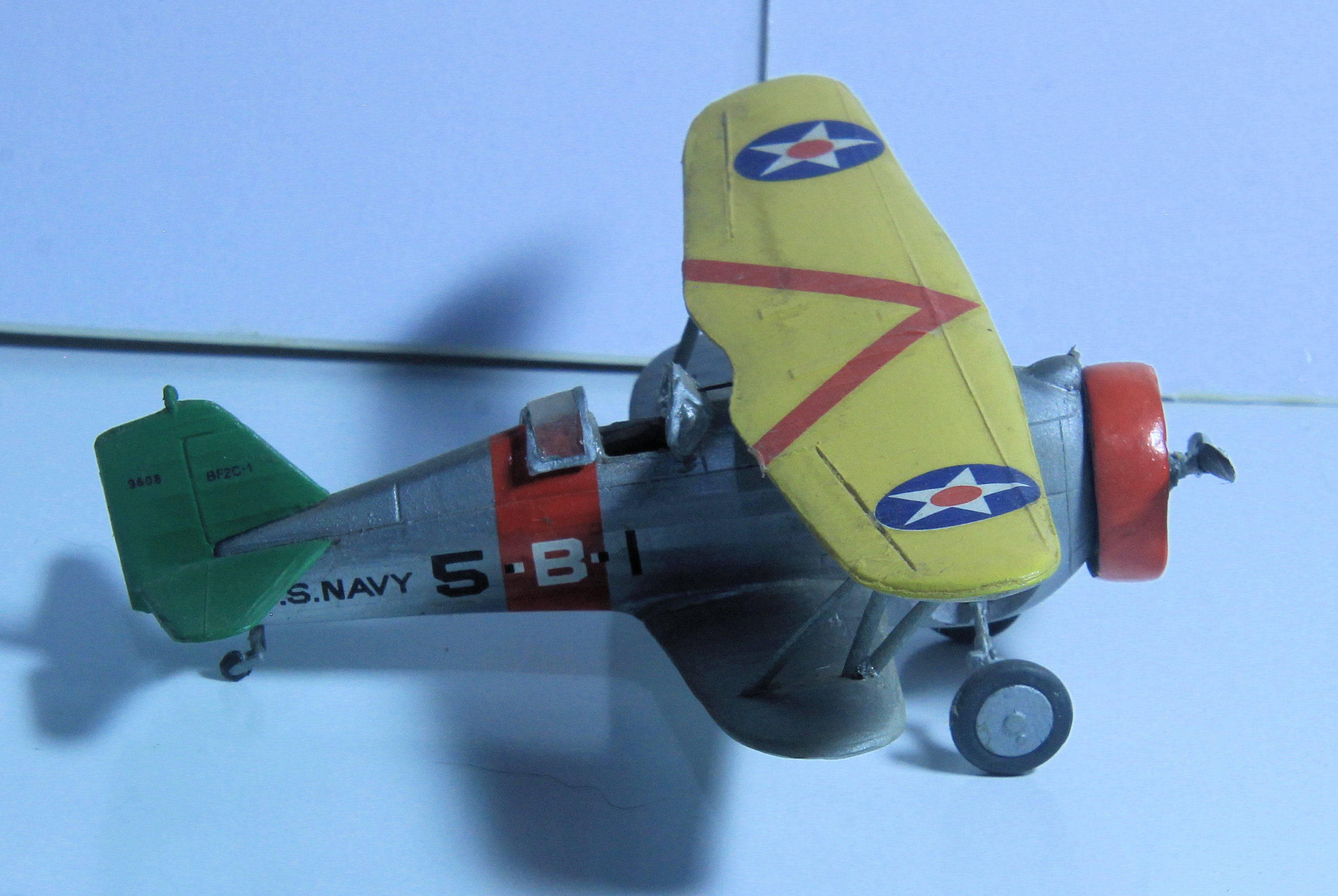Curtiss F11C-3 Hawk III / BF2C Goshawk
The Curtiss BF2C Goshawk (Model 67) was a United States 1930s naval biplane aircraft that saw limited success and was part of a long line of Hawk Series airplanes made by the Curtiss Aeroplane and Motor Company for the American military, and for export as the Model 68 Hawk III.
The United States Navy and Curtiss felt that the F11C-2 possessed development potential, and the Navy decided to procure a variant with retractable landing gear. This variant, which still had the F11C-2’s classic “Hawk” wood wing with its flat-bottomed Clark Y airfoil, was designated XF11C-3 by the Navy and Model 67 by Curtiss. The main gear retraction system was inspired by the Grover Loening-designed system on the Grumman XFF-1 prototype, and was manually operated.
The XF11C-3 was first delivered to the USN in May 1933, with a Wright R-1820-80 radial engine rated at 700 hp (520 kW). Trials revealed a 17 mph (27 km/h) increase in speed over the F11C-2, but the extra weight caused a decrease in maneuverability. The Navy felt the handling degradation was more than offset by the increase in speed, however. During testing the XF11C-3 had its wood-framed wing replaced by the metal-structured, biconvex, NACA 2212 airfoil wing, and soon after was redesignated XBF2C-1 (Model 67A) in keeping with the new Bomber-Fighter category.
Curtiss F11C-3 Hawk III 1/72 Scale Model by Merlin Models

Curtiss F11C-3 Hawk III 1/72 Scale Model by Merlin Models 
Curtiss F11C-3 Hawk III 1/72 Scale Model by Merlin Models 
Curtiss F11C-3 Hawk III 1/72 Scale Model by Merlin Models 
Curtiss F11C-3 Hawk III 1/72 Scale Model by Merlin Models 
Curtiss F11C-3 Hawk III 1/72 Scale Model by Merlin Models 
Curtiss F11C-3 Hawk III 1/72 Scale Model by Merlin Models 
Curtiss F11C-3 Hawk III 1/72 Scale Model by Merlin Models 
Curtiss F11C-3 Hawk III 1/72 Scale Model by Merlin Models 
Curtiss F11C-3 Hawk III 1/72 Scale Model by Merlin Models Box Art
